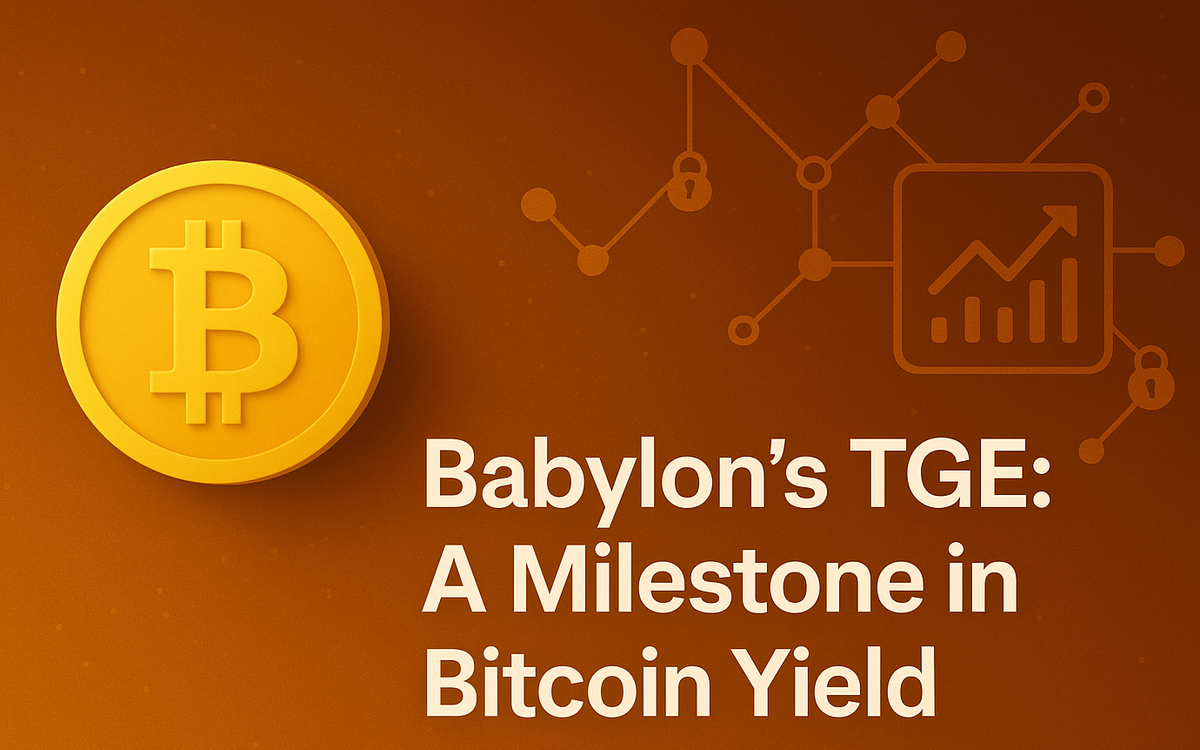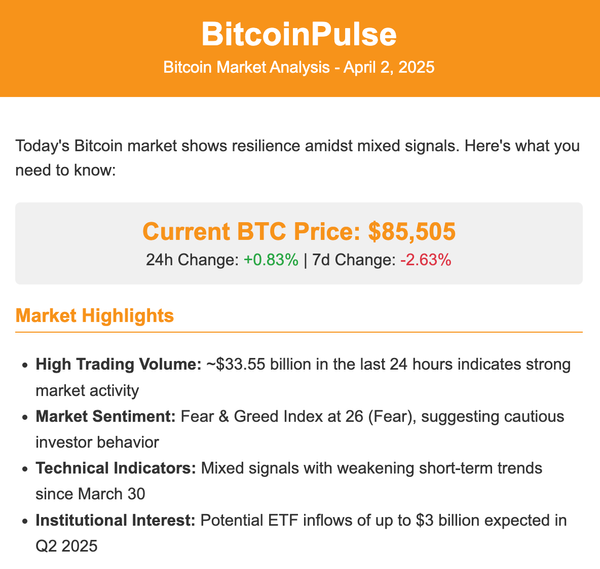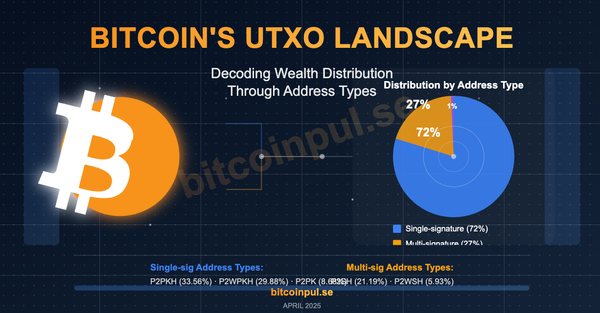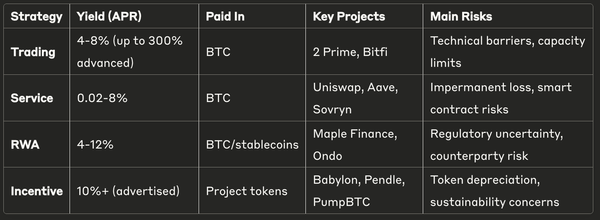Babylon TGE: In-Depth Analysis of Valuation, Yield Dynamics and Investment Strategy

TL;DR: Babylon's upcoming TGE represents a significant milestone in Bitcoin's yield ecosystem with 56,853 BTC ($4.83B) currently staked. Key findings:
- Realistic valuation range: $1.45-$2.42 per BABY token (FDV: $1.45B-$2.42B)
- Actual yield rates: 3%-5% APY at these price levels, below typical staking products on ETH/SOL but reasonable for the Bitcoin ecosystem.
- Required for success: Effective anti-dilution mechanisms and strong demand growth
- Recommended strategy: Allocate only 20% at TGE, reserve 80% post-launch
Despite innovative technology and strong TVL, Babylon faces challenges in providing competitive yields while managing token dilution. Success depends on implementing value capture mechanisms beyond basic staking rewards.
Project Overview and Market Context
Babylon is an innovative protocol enabling Bitcoin holders to stake their BTC to secure Proof-of-Stake (PoS) blockchains while maintaining self-custody. Key differentiators include:
- No wrapping or bridging: Direct staking of native BTC
- Self-custody priority: Stakers maintain control of their private keys
- Time-lock mechanism: BTC automatically returns to stakers after approximately one week
- Security infrastructure: Provides security to multiple PoS chains through Bitcoin's economic security
Current Market Metrics
- Staked BTC: 56,853 BTC
- BTC current price: $85,000
- Total Value Locked (TVL): $4,832,505,000 (~$4.83 billion)
- BABY token total supply: 1 billion tokens
- Estimated initial circulating supply: 15-20% (150-200 million tokens)
Bitcoin Market Environment
The current Bitcoin market presents several challenges that impact new project valuations:
- Cautious market sentiment
- Trading volumes below historical peaks
- Slowing institutional inflows
- Tighter overall crypto market liquidity
Comparable projects launched in the past six months show an average FDV/TVL ratio of approximately 0.38, suggesting more conservative valuations than during bull market peaks.
Yield Mechanisms Analysis
BABY Token Rewards
The primary yield source for stakers comes from BABY token rewards:
- Estimated annual release of ~10% of total supply for staking rewards (100 million tokens)
- Yield rate depends on BABY token price and total BTC staked
- Formula: Annual Yield = (Token Price × Annual Release) ÷ Total Value of Staked BTC × 100%
Yield Projections
Estimated annual yield rates at different BABY token prices:
| BABY Price | Annual Value of 100M Tokens | Annual Yield |
|---|---|---|
| $1.00 | $100 million | 2.07% |
| $1.50 | $150 million | 3.10% |
| $2.00 | $200 million | 4.14% |
| $2.50 | $250 million | 5.17% |
| $3.00 | $300 million | 6.21% |
These yield rates are substantially lower than traditional staking products (8-15% range), potentially limiting attractiveness without additional value mechanisms.
Potential Additional Value Sources
Beyond direct token rewards, Babylon may create additional value through:
- Protocol revenue sharing: Using portions of PoS validation revenue for BABY token buybacks
- Ecosystem expansion: Increasing token utility across multiple use cases
- Governance rights: Voting power on protocol decisions
- Airdrop eligibility: Potential qualification for future project airdrops
However, these additional value sources remain speculative and difficult to quantify, so investors should not rely on them as primary yield considerations.
Valuation Framework
FDV/TVL Based Valuation
Considering current market conditions, a reasonable FDV/TVL ratio range is 0.3-0.5:
| FDV/TVL Ratio | Calculation | FDV Valuation | BABY Token Price |
|---|---|---|---|
| 0.3 | $4.83B × 0.3 | $1.45 billion | $1.45 |
| 0.4 | $4.83B × 0.4 | $1.93 billion | $1.93 |
| 0.5 | $4.83B × 0.5 | $2.42 billion | $2.42 |
Yield-Driven Valuation
If we establish target yield requirements to maintain basic competitiveness:
| Target Yield | Required Annual Token Value | Corresponding Token Price (10% release) |
|---|---|---|
| 3% | $145 million | $1.45 |
| 4% | $193 million | $1.93 |
| 5% | $242 million | $2.42 |
| 6% | $290 million | $2.90 |
Target Price Ranges
Synthesizing market valuation standards and yield requirements, Babylon TGE's reasonable price ranges:
- Conservative Range: $1.45-$1.93
- Corresponding FDV: $1.45-$1.93 billion
- Corresponding FDV/TVL: 0.3-0.4
- Annual yield: 3.00%-3.99%
- Baseline Range: $1.93-$2.42
- Corresponding FDV: $1.93-$2.42 billion
- Corresponding FDV/TVL: 0.4-0.5
- Annual yield: 3.99%-5.01%
Token Dilution Risk Assessment
Supply Growth Projections
Assuming initial circulation of 15% (150 million tokens) and 10% annual release for staking rewards:
| Timeframe | New Circulation | Cumulative Circulation | Circulation Growth |
|---|---|---|---|
| Initial | - | 150M (15%) | - |
| +3 months | +2.5% | 175M (17.5%) | +16.7% |
| +6 months | +5% | 200M (20%) | +33.3% |
| +12 months | +10% | 250M (25%) | +66.7% |
Quantifying Dilution Effects
Net value change due to dilution:
| Price Range | Annual Yield | 1-Year Circulation Growth | Net Value Change |
|---|---|---|---|
| $1.45-$1.93 | 3.00%-3.99% | 66.7% | -63.7% to -62.7% |
| $1.93-$2.42 | 3.99%-5.01% | 66.7% | -62.7% to -61.7% |
For example: At $1.93 price, the 3.99% annual yield is significantly outweighed by the 66.7% increase in circulation, resulting in approximately -62.7% net value change unless equivalent new demand counterbalances this supply growth.
Essential Anti-Dilution Mechanisms
To maintain token value, Babylon needs to implement robust anti-dilution mechanisms:
- Token buybacks and burns: Using protocol revenue to repurchase circulating tokens
- Locking incentives: Providing additional rewards for long-term locking
- Decreasing emission schedule: Gradually reducing staking reward emission rates
- Demand growth mechanisms: Expanding token utility cases to increase market demand
Without these mechanisms, token holders face significant value dilution risk.
Impact of Staking Growth on Yields
TGE may attract additional BTC staking, further diluting yield rates:
| Staking Growth | New Total Staked | New Total Value | Yield Change at Same Token Price |
|---|---|---|---|
| +30% | 73,909 BTC | $6.28 billion | Yield decreases by 23.1% |
| +50% | 85,280 BTC | $7.25 billion | Yield decreases by 33.3% |
| +100% | 113,706 BTC | $9.67 billion | Yield decreases by 50% |
For example: If staking volume increases by 50%, the annual yield at $2.00 price would drop from 4.14% to 2.76%.
Supply-Demand Balance and Price Projections
Supply-Demand Equilibrium Model
Based on supply growth and potential demand growth, we can model price projections:
Projected Price = Initial Price × (1 + Demand Growth Rate - Supply Growth Rate)
Assuming $2.00 initial price and 10% annual emission rate (causing 66.7% circulating supply growth), 12-month price projections under different demand scenarios:
| Demand Growth Scenario | Supply Growth | Net Effect | 12-Month Price Projection |
|---|---|---|---|
| Low growth (+30%) | +66.7% | -36.7% | $1.27 |
| Medium growth (+67%) | +66.7% | +0.3% | $2.01 |
| High growth (+100%) | +66.7% | +33.3% | $2.67 |
| Very high growth (+150%) | +66.7% | +83.3% | $3.67 |
This highlights the need for substantial and sustained demand growth to maintain token price stability.
Investment Strategy Recommendations
Price Expectations Management
Based on current Bitcoin market conditions, relatively low yield rates, and significant dilution risks, investors should maintain cautious price expectations:
- Focus on the $1.45-$2.42 price range (FDV/TVL: 0.3-0.5)
- Recognize that even within this range, yield rates remain relatively low (3%-5%)
- Understand the high risk in the absence of clear anti-dilution mechanisms
Key Risk Factors
Investors should be aware of several risk factors:
- Token dilution risk: Supply increases from staking rewards and team/investor unlocks
- Rapid staking growth: Quickly growing staking volume could significantly reduce yield rates
- Technical risks: Cross-chain security issues could impact staking safety
- Regulatory uncertainty: Potential regulatory changes affecting staking activities
- Competition risks: Other Bitcoin staking solutions competing for market share
- Limited token utility: Insufficient use cases may fail to generate adequate demand
Conclusion
Babylon represents an innovative approach to Bitcoin staking with significant potential value, but investors need to maintain a realistic understanding of its yield mechanisms and dilution risks.
Based on current market conditions, the $1.45-$2.42 price range (corresponding to $1.45-$2.42 billion FDV) represents a relatively reasonable valuation, but the annual yield rates of 3%-5% within this range fall significantly below traditional staking products.
More concerning is the supply growth driven by token emissions (approximately 67% increase in circulation within a year) far exceeding yield rates, meaning that without effective anti-dilution mechanisms, token holders will face severe value dilution.
The key to success lies in Babylon's ability to implement effective value capture and anti-dilution mechanisms, and generate sufficient demand growth to offset supply expansion. Investors should adopt a phased strategy, closely monitor project developments, and maintain cautious expectations for initial valuations.
Disclaimer: This analysis does not constitute investment advice. All calculations are based on currently available information and speculative assumptions, and actual results may vary significantly. Readers should conduct their research and assume all risks.



